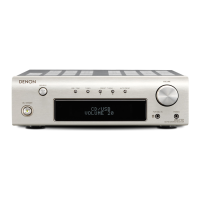Functional Description
Figure 11 PWM Controlling
3.3 Soft-Start
Figure 12 Soft-Start Phase
The Soft-Start is realized by the internal pull-up resistor
R
Soft-Start
and the external Capacitor C
Soft-Start
(see
Figure 5). The Soft-Start voltage V
SoftS
is generated by
charging the external capacitor C
Soft-Start
by the internal
pull-up resistor R
Soft-Start
. The Soft-Start-Comparator
compares the voltage at pin SoftS at the negative input
with the ramp signal of the PWM-OP at the positive
input. When Soft-Start voltage V
SoftS
is less than
Feedback voltage V
FB
the Soft-Start-Comparator limits
the pulse width by resetting the PWM-Latch (see
Figure 12). In addition to Start-Up, Soft-Start is also
activated at each restart attempt during Auto Restart.
By means of the above mentioned C
Soft-Start
the Soft-
Start can be defined by the user. The Soft-Start is
finished when V
SoftS
exceeds 5.3V. At that time the
Protection Unit is activated by Comparator C4 and
senses the FB by Comparator C3 wether the voltage is
below 4.8V which means that the voltage on the
secondary side of the SMPS is settled. The internal
Zener Diode at SoftS has a clamp voltage of 5.6V to
prevent the internal circuit from saturation (see Figure
13).
Figure 13 Activation of Protection Unit
The Start-Up time T
Start-Up
within the converter output
voltage V
OUT
is settled must be shorter than the Soft-
Start Phase T
Soft-Start
(see Figure 14).
By means of Soft-Start there is an effective
minimization of current and voltage stresses on the
integrated CoolMOS™, the clamp circuit and the output
overshoot and prevents saturation of the transformer
during Start-Up.
x3.65
PWM OP
Improved
Current Mode
PWM Comparator
Isense
Soft-Start Comparator
6.5V
PWM-Latch
0.8V
FB
Optocoupler
R
FB
t
5.3V
V
SoftS
Gate Driver
t
T
Soft-Start
5.6V
6.5V
R
FB
6.5V
Power-Up Reset
C4
5.3V
C3
4.8V
R
Soft-Start
FB
R
S
Q
Q
Error-Latch
R
S
Q
Q
PWM-Latch
G2
Clock
Gate
Driver
5.6V
SoftS
C
Soft Start–
T
Soft Start–
R
Soft Start–
1.69u
-------------------------------------=

